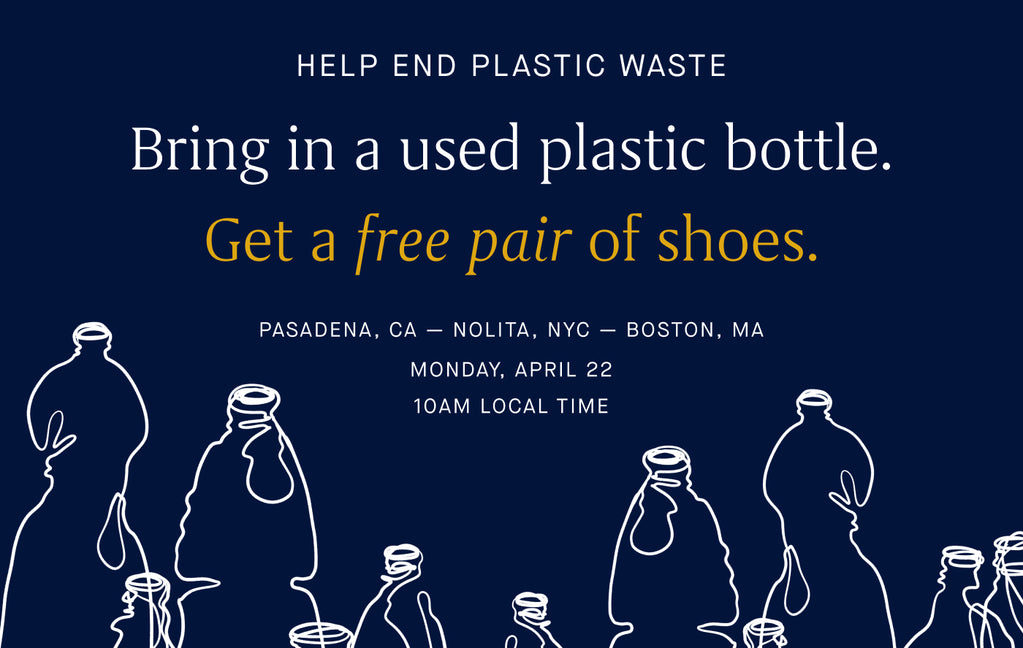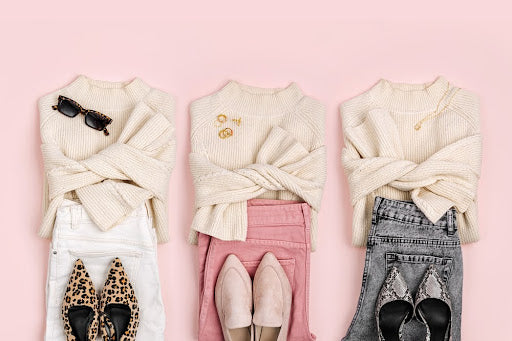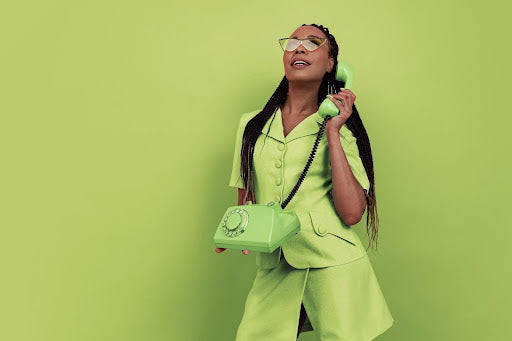Sustainability in the fashion industry.

The popularity of fast fashion has made a huge impact on the clothing industry—but the negative effects are far-reaching. Fast fashion retailers feed into the breakneck speed of new trend cycles at a very cheap price point. But that low price comes at the cost of unfair wages, abusive labor practices, environmental degradation, and waste. The fashion industry is notorious for its wasteful practices and with climate change coming to a critical turning point, many consumers are looking for ways to reduce their environmental impact.
aHere are some fast fashion stats (as of 2019) to put things in perspective:
- 80 billion garments are consumed around the world each year.
- The amount of water used in the production of clothes totals 32 million Olympic swimming pools.
- The wages of clothing factory workers can be as low as 33 cents an hour.
- Women wear clothing an average of 7 times before throwing it away.
- Clothing is designed to fall apart, a step back from classic styles of clothing meant to last years.
So what’s an ethical shopper to do when faced with these facts? One big step you can take is to support sustainability in the fashion industry. These days, there are tons of brands, designers, and companies dedicated to sustainable fashion.
What does ethical, sustainable fashion mean?
Sustainable fashion isn’t just about the materials a garment is constructed from—it involves the entire process of manufacturing a piece of clothing. From sourcing materials, manufacturing, marketing, and shipping, there’s a lot more to the process of making an item of clothing than just the construction of the garment itself. According to Green Strategy, sustainable fashion works to:
- Improve all aspects of a product’s life cycle.
- Minimize the environmental effects of making the product.
- Prioritize socioeconomic considerations.
- Encourage sustainability in the marketplace.

Rothy’s
Rothy’s takes a whole brand approach to sustainability. To make a pair of pointed toe flats, for example, a 3D knit process is used which saves more than 30% of material. The uppers of Rothy’s shoes are constructed from 100% post-consumer plastic water bottles, one of the biggest environmental offenders for single-use plastic.
As of 2020, over 50 million water bottles destined to sit in landfills have been transformed into chic, functional eco friendly shoes thanks to Rothy’s. And the need for reducing plastic pollution is greater than ever according to these stats:
- Every single minute, one million water bottles are sold internationally.
- In 2020, it’s estimated that half a trillion water bottles will be sold.
- 91% of plastic is not recycled.

In addition, each foam insert used in Rothy’s shoes is recyclable and made from recycled materials. Here are some other ways Rothy’s is leading the way for sustainability in the fashion industry:
Packaging
- Streamlined packaging: A minimalist shoe box that’s sturdy enough to ship on its own means less waste.
- Eco-friendly materials: Boxes are made from recycled materials, and cardboard shoe inserts are biodegradable.
- No tape is necessary for the returns process because the box comes with a resealable Rothy’s blue ribbon.
Production:
- Seamless 3D knit: A precision knitting process for the exact size of each pair means a better fit and less wasted material overall.
- Ethical factory conditions: We provide fair wages, daily meals, and living accommodations for all employees at our fully owned and operated workshop.
Transportation:
- Counteract carbon emissions: Carbon credits are used to counteract carbon emissions from shipping.
- Carbon offsets: In 2019, Rothy’s offset 9,775 tonnes of carbon.
Rothy’s HQ:
- As of October 2017, Rothy’s HQ in San Francisco is powered completely by wind through CleanPowerSF SuperGreen.
- LED lights and appliances are used.
Lifespan:
- Built for durability: Rothy’s are designed to withstand everyday wear and tear.
Now Rothy’s also offers opportunities for young consumers to get in on sustainable fashion with loafers for girls. You’re never too young or old to start thinking about the ways your actions —big and small— affect others and impact the world around you.

The future of sustainable fashion.
Climate change has already had a devastating impact on the environment—but there are still ways to mitigate its effects. Besides buying products from companies with a proven sustainability record, consumers can also “close the loop” of waste by thrifting, recycling old clothes, and re-using clothing as much as possible before resorting to throwing something away. Both businesses and consumers have a responsibility to start thinking about how even the smallest actions affect the world on a greater scale. With the support of a growing number of eco-conscious consumers, the sustainable fashion industry is ready for the next step, with Rothy’s footwear leading the charge.
























